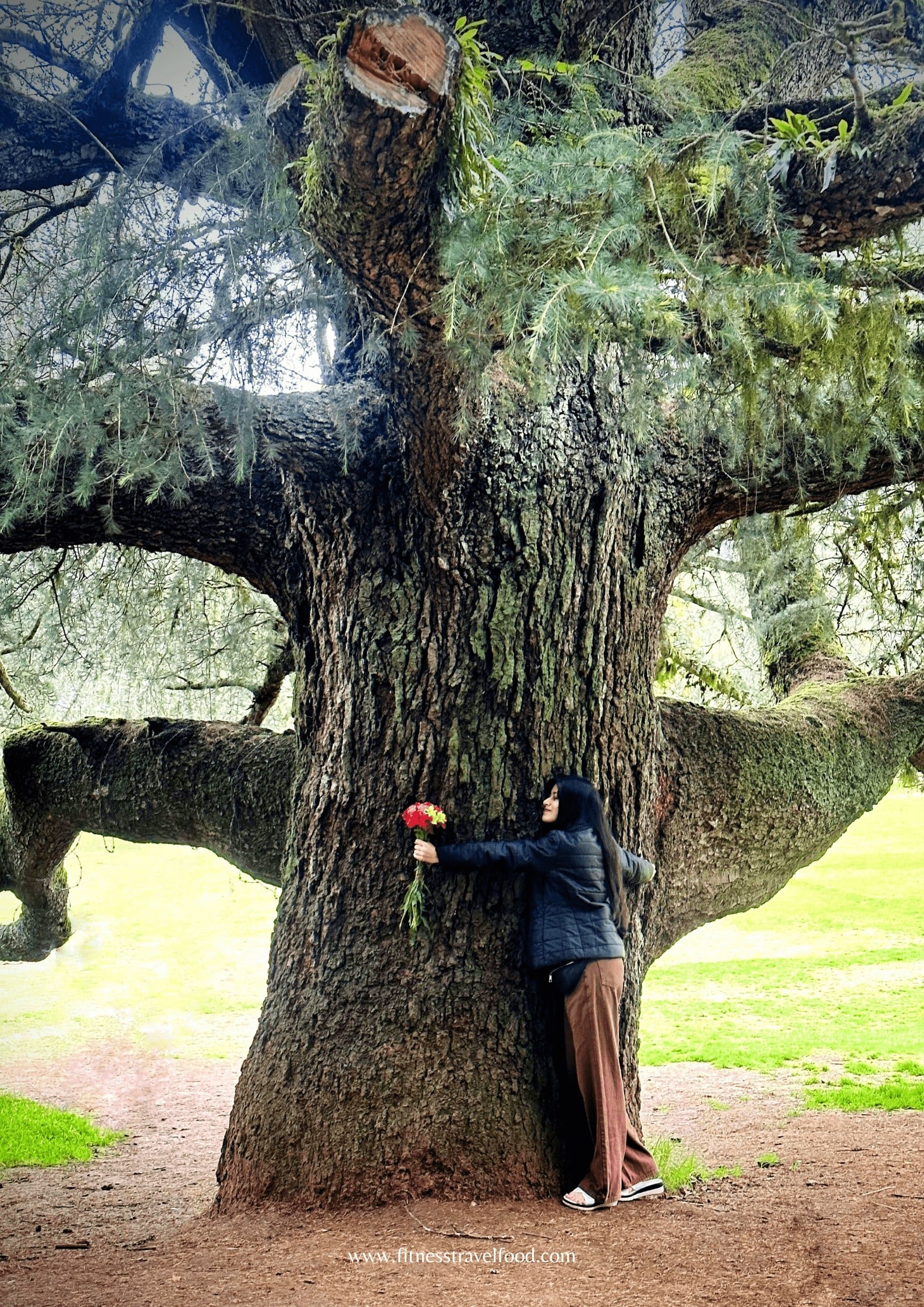Are you sick of your same old workout regimen? Looking to challenge both your body and mind? Look no further than trekking! Trekking not only offers breathtaking views and an opportunity to connect with nature, but it can also boost your fitness level in ways you may not expect.
Engaging in regular trekking activities requires cardiovascular endurance, muscular strength, and mental focus. When you trek uphill, your heart rate increases, improving your cardiovascular fitness. The uneven terrain and varying elevations engage different muscle groups, providing a full-body workout that strengthens your legs, core, and upper body.
But trekking isn’t just about physical fitness. It has numerous mental benefits as well. The peaceful surroundings and stunning vistas will help alleviate stress and anxiety, while the challenges of navigating and problem-solving on the trail can enhance your mental resilience and sharpness.
So, if you’re ready to take your fitness journey to new heights, grab your hiking boots and hit the trails. Trekking will not only invigorate your body but also rejuvenate your mind, leaving you feeling refreshed, accomplished, and connected to nature like never before.
“Trekking isn’t just for physical and mental fitness; it’s a complete personality transformation journey.”
Neha Kaithwas
🟢How Trekking Improves Cardiovascular Fitness?
Trekking is a fantastic way to enhance your cardiovascular fitness. When you trek uphill, your heart rate increases, providing an excellent cardio workout. The continuous movement of walking or hiking on varied terrain helps improve your endurance and stamina. This sustained physical activity strengthens your heart and lungs, enhancing your overall cardiovascular health. In my case, I used to struggle a lot during my initial hiking trails, but now my body is well adapted. Boosting my self-confidence and encouraging me to hit more trails.
Trekking also helps in lowering blood pressure and reducing the risk of heart-related diseases. The combination of uphill climbs, descents, and flat stretches challenges your heart to pump efficiently, increasing blood flow and oxygen delivery to your muscles. As you conquer different elevations and distances, your heart becomes more efficient at circulating oxygenated blood throughout your body.
Engaging in regular trekking activities can lead to a healthier heart, improved circulation, and increased lung capacity. The rhythmic motion of walking or hiking at varying intensities helps condition your cardiovascular system, making it more resilient to stress and physical exertion.
🟢Strengthening Muscles Through Trekking
One of the significant benefits of trekking is the full-body workout it provides. The uneven terrain and varying elevations engage different muscle groups, helping to strengthen your legs, core, and upper body. Uphill climbs work your quadriceps, hamstrings, and calves, while downhill descents engage your glutes and lower back muscles.
The constant balancing and stabilizing required while trekking strengthen your core muscles, including the abdominals and obliques. Carrying a backpack adds resistance, further challenging your muscles and improving your overall strength. Trekking on rough terrain or rocky paths also activates stabilizing muscles in your feet, ankles, and lower legs, enhancing your balance and coordination.
By engaging multiple muscle groups simultaneously, trekking promotes muscle balance and symmetry, reducing the risk of injuries and improving overall body strength. The repetitive nature of walking or hiking helps build muscular endurance, allowing you to trek longer distances with less fatigue.
🟢Enhancing Endurance and Stamina Through Trekking
Trekking is a great way to enhance your endurance and stamina levels. The continuous nature of walking or hiking for extended periods helps build your aerobic capacity, allowing you to sustain physical activity over longer durations. As you tackle various trails with different intensities, your body adapts to the demands placed on it, improving your overall endurance.
The challenges of trekking, such as steep ascents, rocky paths, and changing weather conditions, test your stamina and mental resilience. Pushing through these obstacles builds mental toughness and determination, helping you overcome physical and mental barriers. As you increase the duration and difficulty of your treks, you’ll notice improvements in your stamina, allowing you to trek farther and conquer more challenging routes.
Building endurance through trekking not only benefits your physical health but also boosts your mental fortitude. The sense of accomplishment and satisfaction that comes from completing a challenging trek can motivate you to push your limits further, leading to continuous improvements in both endurance and stamina.

🟢Nutrition and Hydration During a Trek
Proper nutrition and hydration are essential when engaging in trekking activities to support your fitness goals. Trekking requires a significant amount of energy, so it’s crucial to fuel your body with nutritious foods that provide sustained energy throughout your trek. Pack snacks such as nuts, dried fruits, energy bars, and sandwiches to keep your energy levels up during the hike.
Drink lots of water prior to, during, and after your hike to stay hydrated. Dehydration can affect your performance and overall well-being, so make sure to carry an adequate supply of water or use a hydration pack to stay hydrated on the trail. Electrolyte drinks can also help replenish lost fluids and minerals during strenuous treks.
Incorporate a balance of carbohydrates, proteins, and fats in your pre-trek meals to provide your muscles with the necessary nutrients for sustained performance. Consider packing lightweight, high-energy foods that are easy to carry and quick to eat while on the trail. Planning your nutrition and hydration strategy ahead of time will ensure that you have the energy and endurance to complete your trek successfully.
🟢Mental Health Benefits of Trekking
In addition to its physical benefits, trekking offers numerous mental health advantages. The serene surroundings and natural beauty of the outdoors can have a calming effect on the mind, reducing stress and anxiety levels. The peacefulness of nature provides a therapeutic escape from the hustle and bustle of everyday life, allowing you to unwind and relax.
Pro Tip: Lots of the creative stuff I write or do is actually inspired by trekking and mostly connecting with nature.
Trekking also promotes mindfulness and mental clarity as you immerse yourself in the present moment. The rhythmic motion of walking or hiking, combined with the sights and sounds of nature, can help clear your mind and improve focus. Being surrounded by greenery and fresh air can enhance your mood and mental well-being, boosting feelings of happiness and contentment.
The challenges of trekking, such as navigating unfamiliar terrain and overcoming obstacles, can boost your problem-solving skills and mental resilience. Tackling difficult trails and pushing yourself beyond your comfort zone can build confidence and self-esteem, leading to a sense of accomplishment and empowerment.
🟢Preparing for a Trekking Expedition
Proper preparation is key to a successful and enjoyable trekking expedition. I always start by researching the trail I plan to hike, including its difficulty level, distance, elevation gain, and terrain. This information will help you determine the appropriate gear, clothing, and supplies you need for the trek. Consider factors such as weather conditions, trail conditions, and emergency protocols before setting out.
Ensure you have the right footwear for the terrain, such as sturdy hiking boots with good traction and ankle support. Dress in layers to regulate your body temperature and be prepared for changing weather conditions. Pack essential items such as a downloaded map, compass, first aid kit, snacks, water, sunscreen, insect repellent, and a headlamp or flashlight.
Train physically by gradually increasing your walking or hiking distances to build up your endurance and strength. Practice carrying a backpack with weight to simulate the load you’ll be carrying during the trek. Work on improving your balance, agility, and coordination through exercises that target these areas. Mental preparation is also crucial, so visualize yourself successfully completing the trek and stay optimistic throughout the journey.
🟢Choosing the Right Trekking Gear
Selecting the right trekking gear is essential for a comfortable and safe experience on the trail. Invest in high-quality, moisture-wicking clothing that is breathable and quick-drying to help regulate your body temperature and prevent chafing. Wear comfortable, moisture-wicking socks to keep your feet dry and blister-free.
Choose a well-fitting backpack with padded shoulder straps and a hip belt to distribute the weight evenly and reduce strain on your back. Make sure the backpack is adjustable and has enough capacity to carry your essentials without being too heavy. Consider using trekking poles to provide stability, reduce impact on your joints, and improve your balance on uneven terrain.
Wearing sunscreen, sunglasses, and a wide-brimmed hat will help you stay safe from the sun. Insect repellent can help ward off bugs and ticks, especially in wooded or grassy areas. Carry a lightweight, waterproof jacket in case of rain or unexpected weather changes. Having the right gear can make a significant difference in your comfort and safety while trekking.
🟢Safety Tips for Trekking, Fitness
Safety should always be a top priority when trekking to ensure a smooth and secure experience on the trail. Start by informing someone of your trekking plans, including your intended route, expected return time, and emergency contact information. Before you leave, check the weather forecast and be ready for any changes in the weather.
To prevent getting lost or coming across dangerous terrain, stick to the approved pathways. Follow trail markers and signs to stay on the right path and prevent unnecessary risks. Pace yourself and take breaks as needed to rest and refuel. Listen to your body and be aware of signs of fatigue, dehydration, or injury.
Carry a fully stocked first aid kit and know how to use its contents in case of emergencies. Familiarize yourself with basic first aid procedures for common injuries such as cuts, sprains, and insect bites. Stay hydrated and fuel your body with nutritious snacks to maintain your energy levels throughout the trek. Respect wildlife and nature by observing from a safe distance and leaving no trace of your presence.
“Trekking isn’t just a travel experience; it’s a therapy we all crave.”
Neha Kaithwas
Conclusion: Embracing Trekking Fitness for a Healthier Lifestyle
Trekking is a rewarding activity that not only boosts your fitness level but also enhances your overall well-being. By engaging in regular trekking expeditions, you can improve your cardiovascular fitness, strengthen your muscles, enhance your endurance and stamina, and experience mental health benefits such as stress relief and mindfulness. Proper preparation, including choosing the right gear, nutrition, and hydration, is essential for a safe and enjoyable trekking experience.
Whether you’re a seasoned trekker or new to the world of hiking, embracing trekking as part of your fitness routine can lead to a healthier lifestyle filled with adventure, exploration, and personal growth. So lace up your hiking boots, pack your backpack, and hit the trails to discover the transformative benefits of trekking for your body, mind, and soul.
You deserve that trek therapy!
Happy Sustainable Treks!
What’s your favorite trekking destination?
Share it in the comments below!
Don’t forget to subscribe to our Newsletter for Fitness Travel Food Updates!
To read more such Blogs, Click on Read More!





![🍃Every step in nature holds a tale, and every moment brings us closer to ourselves. When was the last time you connected with nature?
👉Follow @alive_with_ftf for anything around fitness travel food!
#alivewithftf #hikersstory #travel #travelbloggers #natureconnection #reiki #selfdiscoverypath #selfaware #hiking #sustainablejourney #trekkers #hikerstrail #stayalive #views #maharashtratourism
[hikers, nature connection, trekkers, self discovery, growth, hiking, being spiritual, slow travel, sustainable travel, stay alive, nature aesthetics]](https://fitnesstravelfood.com/wp-content/plugins/instagram-feed/img/placeholder.png)

Wow superb blog layout How long have you been blogging for you make blogging look easy The overall look of your site is magnificent as well as the content
Your blog is a treasure trove of valuable insights and thought-provoking commentary. Your dedication to your craft is evident in every word you write. Keep up the fantastic work!
I just wanted to express my gratitude for the valuable insights you provide through your blog. Your expertise shines through in every word, and I’m grateful for the opportunity to learn from you.
Your blog is a true hidden gem on the internet. Your thoughtful analysis and engaging writing style set you apart from the crowd. Keep up the excellent work!
I have been browsing online more than three hours today yet I never found any interesting article like yours It is pretty worth enough for me In my view if all website owners and bloggers made good content as you did the internet will be a lot more useful than ever before
Simply desire to say your article is as surprising The clearness in your post is simply excellent and i could assume you are an expert on this subject Fine with your permission let me to grab your feed to keep up to date with forthcoming post Thanks a million and please carry on the gratifying work
Your articles are always so helpful.
Your blog is a beacon of light in the often murky waters of online content. Your thoughtful analysis and insightful commentary never fail to leave a lasting impression. Keep up the amazing work!